
安德魯.布華頓.如是說
1970年代,柯林.雷德(Colin Reid)成為基斯.卡明斯的學生,他在中國大陸最出名的作品為《竹簡》(Bamboo Scroll)。在上海公共圖書館正門大廳永久陳列的一座四米高的玻璃和鋼結構裝置。雷德作為國際工作室玻璃藝術運動的英國代表人物之一,其成就與作品,非凡的創意、開放與不藏私的分享創作,公開展示在大眾眼前,是本次展覽的焦點與重心。同時,他也是本次展出的其他藝術家之導師,包括莎莉.福克斯,安琪拉.賈曼,布魯諾.羅曼內利,凱倫.布朗寧,費茲.艾爾森和約瑟夫.哈靈頓。自1970年代以來,他的創作靈感圍繞著世界的紋理、大自然、人類文化等,我們可以從他的模具到鑄造的過程,甚至是光學玻璃的特性感受到一致感與專注感,體現他對現實世界的思考。
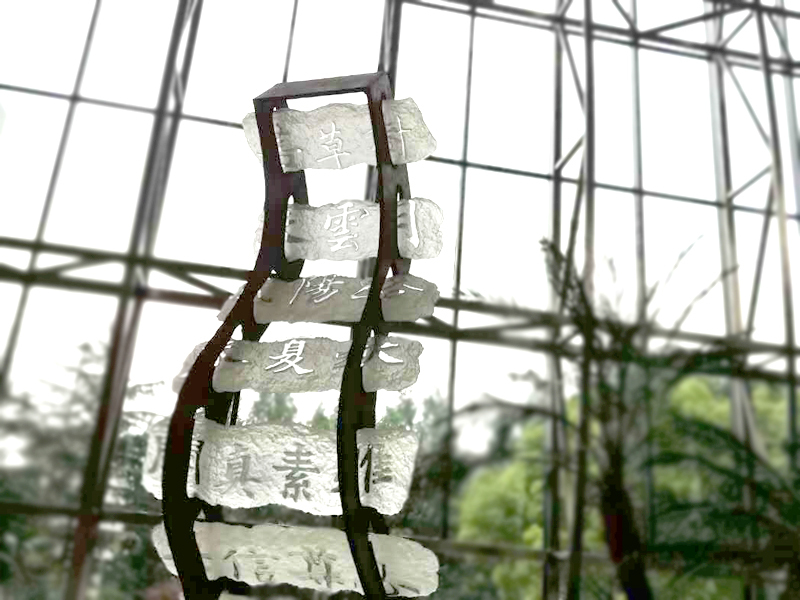
《竹簡》Bamboo Scroll
《竹簡》的雕塑概念是以中國古代書籍的竹簡造型:將雕塑好的竹片綁在一起,成為一種靈活的卷軸,有趣的是設計概念的啟發,也可能來自於雷德在1999年4月上海公共圖書館的改造工程中,看到建築工地裡佈滿了竹製腳架。雷德將中國書寫的文字融入到玻璃創作中,凸出且拋光的中文書法字,如同一扇扇透明的窗,為作品引進光源,此創作嵌在一個如緞帶般並有火焰切割裂紋的仿古色平行結構鋼架中。
作品中的漢字來自印刷的雕刻原件,透過模具,雷德將文字製作成凸出浮雕,這些文字排列組合起來不構成有意義的句子,但每個字都代表美好的自然與美德。此創作不在文字組合後的文本意義,而在於文字組合後相對於整件作品的視覺與美感傳遞,這也是雷德首次將文字符號作為「拾得物」(found objects)融入創作中。透過藝術家,這些文字在藝術創作中熠熠生輝,並賦予文字新的意義象徵。在這件作品中我們看到,先理解材質特質,並以此傳遞創作,透過實做後得到技術與知識。
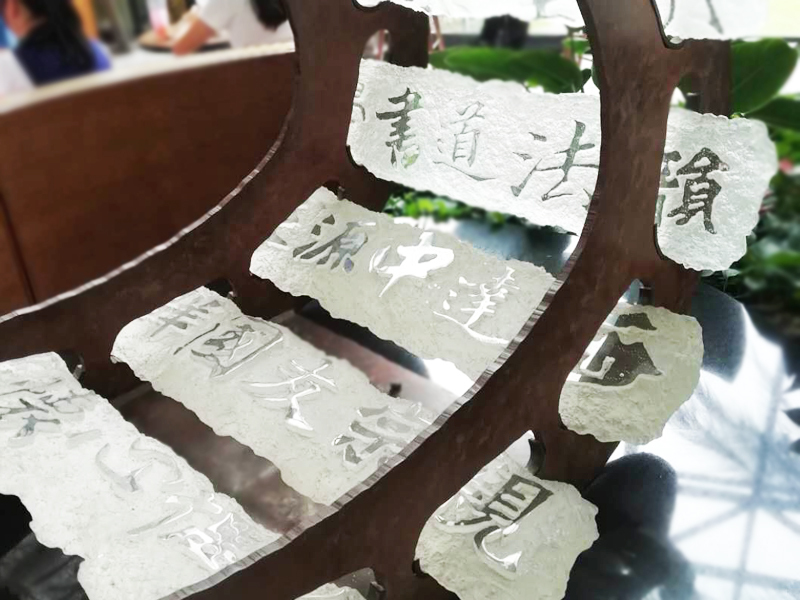
《竹簡》Bamboo Scroll
雷德的作品《風火之環》(Ring of Fire)中,四件窯鑄玻璃創作,因為其技法與顏色運用的手法相近,可視成為一系列創作。
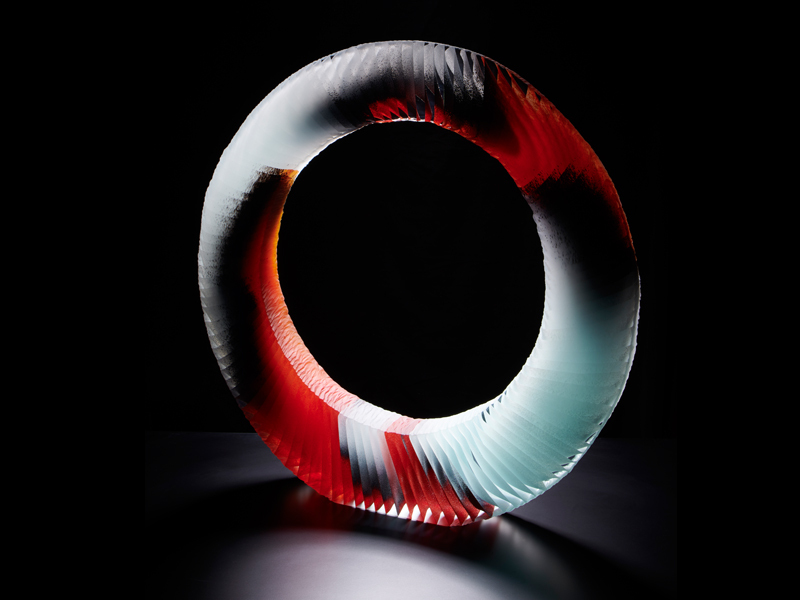
《風火之環》Ring of Fire/photo by Sylvain Deleu
他們同樣運用抽象形式的圖案,且運用海洋系列的主題命名,展現出藝術家雷德對於大海,且身為業餘帆船運動的熱愛:《鸚鵡螺》(Nautilus)、《奔騰》(Wave)、《船帆星》(Vela)、和《容承》(Battuto Vessel)。 「 vela」是義大利文的帆或帆船,「battuto」是義大利文中一種車輪切割技術,玻璃表面經過多次磨擦處理再拋光,塑造出類似被鍛鍊敲擊後的銅或錫表面觸感,「vessel」在英文中可以作為船或遠洋船。
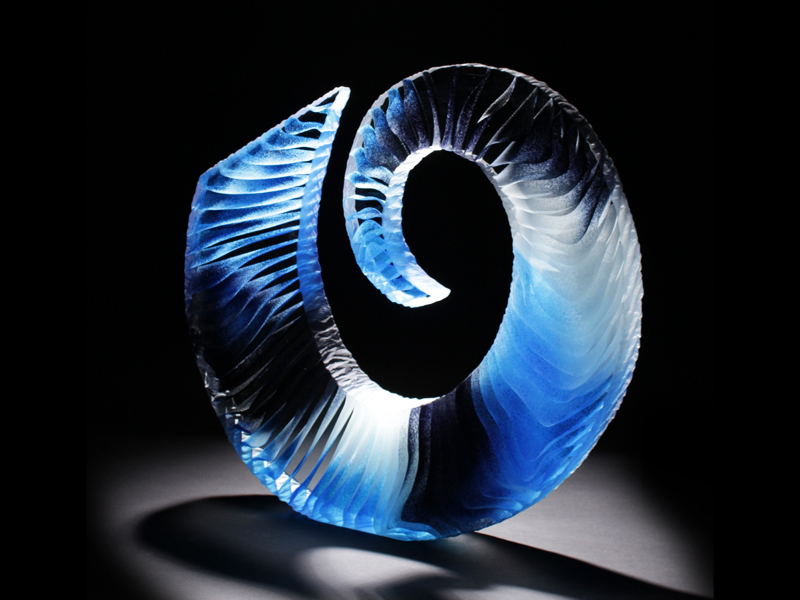
《鸚鵡螺》Nautilus/photo by Colin Reid
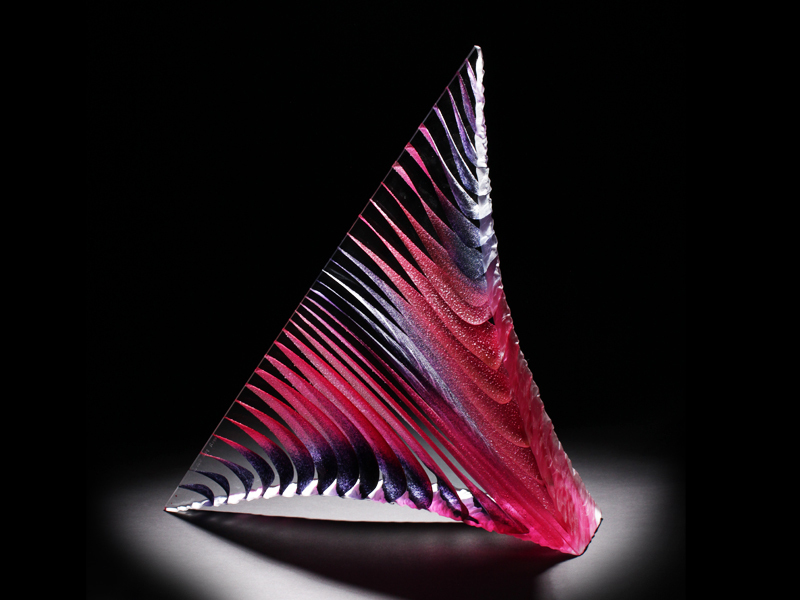
《船帆星》Vela/photo by Colin Reid
在雷德的另一系列四件作品《向日葵》(Still Life with Sunflowers 2019),《漫步塔加納納》(Walk in Taganana 2019),《玉米》(Still Life with Corn 2017) 與 《飛魚》(Shoal of Roach 2016)中,我們可以看到他獨有的材質表面處理技法。
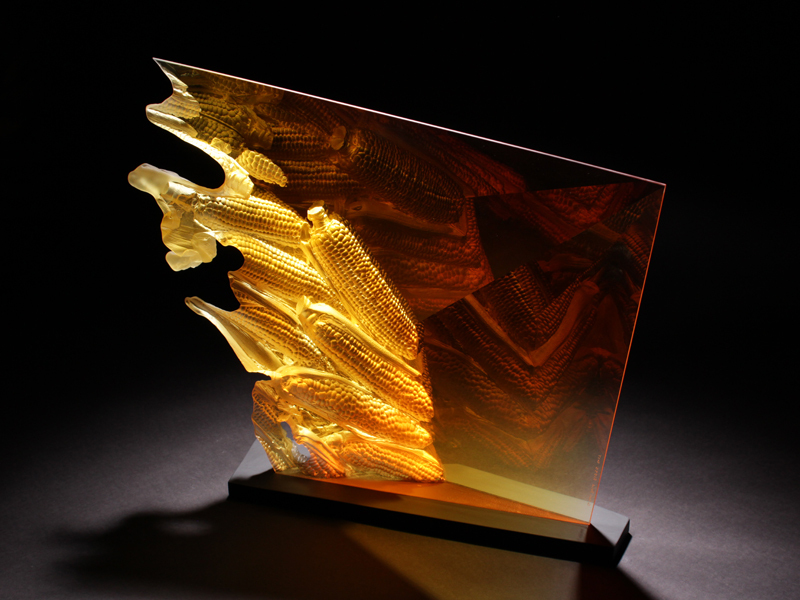
《玉米》Still Life With Corn/photo by Colin Reid
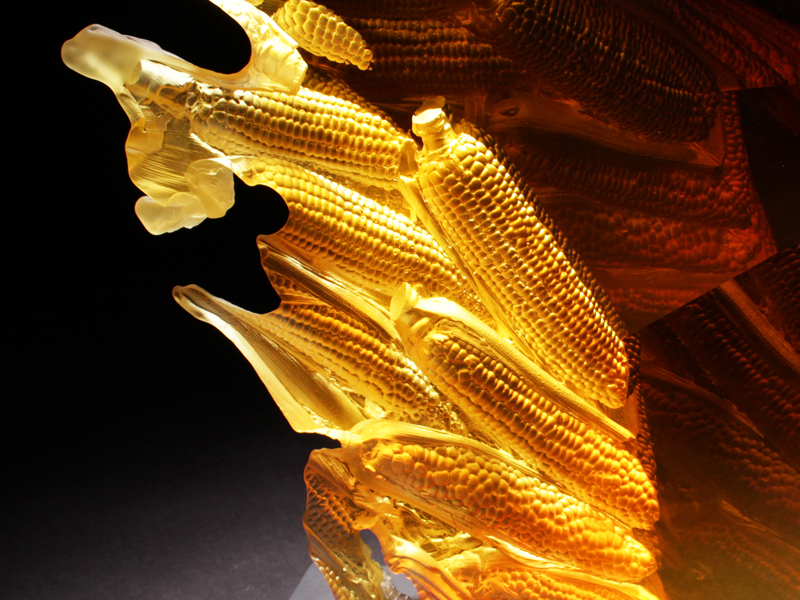
《玉米》Still Life With Corn/photo by Colin Reid
他運用翻模模具和清晰精準的切割面,讓窯鑄玻璃內部結構完全展現。當觀賞者在作品周圍移動時,透過光的反射與折射,產生空間幻覺,如同一幅流動的細緻畫作。雷德談到他的創作思考:
「如果說有一個貫穿我創作思考的主軸,那便是大自然帶給我的影響,它是我獲得啟發或尋找新創作的靈感源泉。我的創作領域是窯鑄玻璃,運用不同的製模技術創造新的形式。我的創作以光學玻璃為主,因為我喜歡這個材質的純淨透明。玻璃在窯爐裡燒製的時間很長,每件作品至少要三周的時間,才能達到我想要的厚度與深度效果。而作品從窯爐出來時,僅僅只是製作過程的開始。作品從窯爐取出後,還需進行多道冷工手續,包括研磨、拋光、噴砂等。在這個階段我和玻璃之間的互動會讓一切發生各種變化,但也可能失敗碎裂。然而,正是這種無法完全掌控的特質,在控制與意外之間平衡遊走,讓創作的過程多了一種緊張感、創意感,雖然也可能是災難。因此當我心情不好或運氣不好的時候,我絕對不會去開窯爐。我所追求的目標是難以捉摸且無法具體形容的,但是當我親眼所見,我便馬上知道這正是我所追求的。」
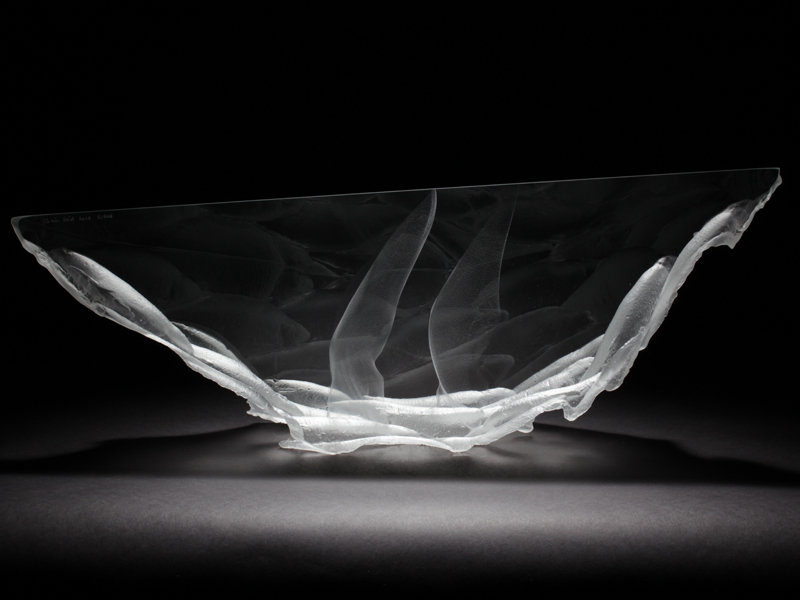
《飛魚》Shoal of Roach/photo by Colin Reid
Andrew Brewerton said……
A student of Keith Cummings in the 1970s, Colin Reid (b.1953) is perhaps best known in China for Bamboo Scroll (1999), a four-metre-high glass and steel installation on permanent display in the main entrance lobby of the Shanghai Public Library. Reid's position as a British artist within the international studio glass movement and as a mentor to a succession of studio assistants, including Sally Fawkes, Angela Jarman, Bruno Romanelli, Karen Browning, Fiaz Elson and Joseph Harrington, provides the focal interest or centre of gravity for A Thread of Light. It is a record of extraordinary creativity, openness and generosity. Reid's work since the 1970s has evolved constantly under the inspiration of formal interests in the texture of the world, the skin of things in nature and in human culture. There is a consistent, though not exclusive preoccupation with the print of reality as it registers from mould to cast to figure in the optical properties of the transparent medium.
The sculptural concept for Bamboo Scroll took as its point of departure ancient Chinese literary artefacts, namely engraved bamboo strips bound together to form a kind of flexible scroll. The design brief may have been unconsciously informed by the physical incident of the bamboo scaffolding which filled the library as a building site in April 1996 when this project commission took seed. Chinese written characters are incorporated in cast optical crystal blocks in raised and polished relief, providing cursive transparent windows into the light medium. The glass is held in a parallel ribbon structure of flame-cut and patinated steel.
The Chinese characters derive from engraved print originals, reversed out in raised relief through the mould making process, and they comprise a loosely ordered series representing elemental natural and human qualities. This is not a text as such – there is no woven narrative connection between the word sequence – but the layered disposition of Chinese written characters has clearly influenced the overall composition of the piece. This was in a sense Reid's first engagement with written symbols as 'found objects', and it is the visual energy of these characters, rather than their linguistic meaning, that stands foremost. Physically and metaphorically speaking, the characters hang luminous and illuminated in the light of day. Material precedes meaning; making comes before knowing.
Along with Ring of Fire (2019), four new kiln-cast works in the current show are linked by technique, notably here in the artist's recent use of colour inclusions as internal patterning within abstracted forms, and with titles variously invoking the artist's maritime interests as a keen amateur yachtsman: Nautilus; Wave; Vela [the Italian word for 'sail', or sail boat]; and Battuto Vessel. Battuto [meaning 'beaten' in Italian] is a wheel-cutting technique in which the glass surface is treated with multiple abrasions and polished to resemble beaten copper or pewter surface. The English word vessel can mean both a container or household utensil and a boat or ocean-going craft.
Reid's distinctive counterpoint of moulded surface relief with clear facets exposing internal dimensions in kiln-cast optical crystal is represented in Still Life with Sunflowers (2019), Walk in Taganana (2019) Still Life with Corn (2017) and Shoal of Roach (2016). The interplay of reflective and refractive properties, and the spatial illusions these qualities give rise to as we move around the object, creates a kind of animated presence in the work. In his own words:
If I were to identify a single thread that runs through my work it would be the influence of nature. That is the source to which I return for inspiration and fresh material for my work. I work in kiln-cast glass, using various moulding techniques to make the forms and moulds in which I cast my glass. My current work is mainly in optical glass because I like its purity. Firings are long, three weeks is typical, so I can get thickness and depth. When the piece comes out of the kiln it is only the start of the making process. There is much cold-work to be done, grinding, polishing, and sandblasting. The pieces evolve and change at this stage as I respond to what has come out of the kiln. Chance plays its part. The tension between what is planned and controlled and what is unexpected can be both creative and disastrous. I do not open the kiln if I am having a bad day. The quality I am after is elusive, impossible to describe, but I know it when I see it. [1]
[1]Colin Reid, personal statement at: https://www.adriansassoon.com/artists/colin-reid/











